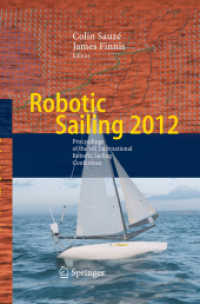- ホーム
- > 洋書
- > ドイツ書
- > Mathematics, Sciences & Technology
- > Earth Science
Full Description
This book provides comprehensive information on emerging contaminants in water, their sources, detection techniques, ecological and health impacts, and sustainable mitigation strategies.








